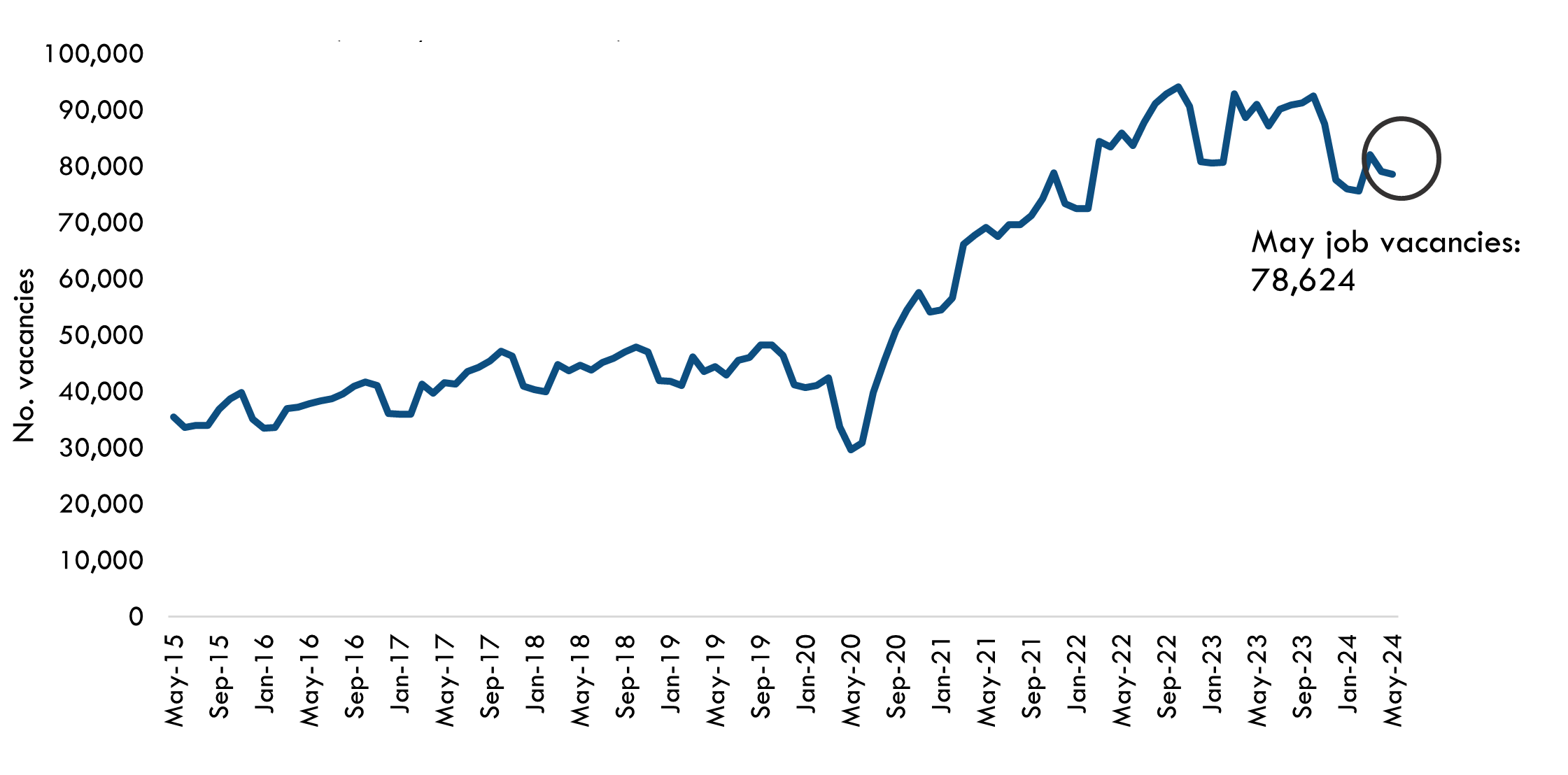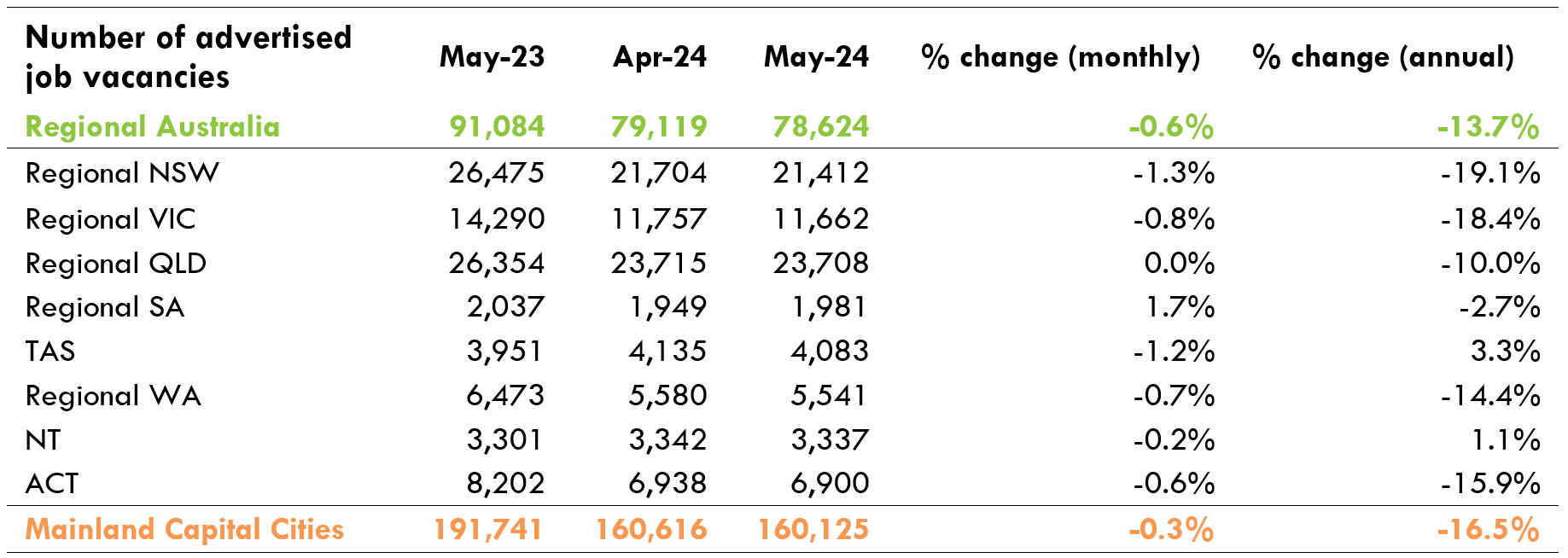Regional Labour Demand
Regional job internet vacancies remained steady at just under 79,000 in May 2024, with a slight dip of 0.6 per cent from the previous month. This latest number of job ads is also 13.7 per cent less than a year earlier.
In comparison, metro areas experienced a smaller monthly drop but a greater annual decline, with decreases of 0.3 per cent and 16.5 per cent respectively.
Regional Australia job vacancies
Jobs and Skills Australia, monthly internet vacancies, RAI

A decline in regional job vacancies was recorded in all states and territories with the exception of South Australia, which recorded an increase of 1.7 per cent.
The top individual growth regions are scattered around South Australia, Victoria, Tasmania, and the Northern Territory. The five regions that recorded the largest monthly increases in vacancies in May 2024 were:
- Yorke Peninsula & Clare Valley up by 5.3% (358 compared to 340)
- Fleurieu Peninsula & Murray Mallee up by 2.6% (1,030 compared to 1,005)
- Bendigo & High Country up by 1.6% (4,034 compared to 3,971)
- Hobart & Southeast Tasmania up by 1.5% (2,346 compared to 2,311)
- Darwin up by 1.1% (2,287 compared to 2,263)
The biggest monthly falls were in North West Tasmania, Launceston and Northeast Tasmania, and Wimmera & Western.
Most regions experienced an annual decline in May, with only six regions showing an increase. The five regions with the biggest jumps in vacancies in May 2024 compared with May 2023 were:
- Regional Northern Territory up by 6.5%
- Fleurieu Peninsula & Murray Mallee up by 4.6%
- Hobart & Southeast Tasmania up by 4.3%
- Launceston and Northeast Tasmania up by 2.6%
- Yorke Peninsula & Clare Valley up by 1.7%
The largest annual falls in regional Australia were Outback Queensland, Dubbo & Western NSW, and Tamworth and North West NSW.

In terms of occupations, vacancies were largest for Professional roles (27% of all vacancies in May), followed by Technicians and Trades roles (15%), Community and Personal Service roles (13%), and Clerical and Administrative roles (13%). The spread of job vacancies across occupation groups highlights the significant demand for highly skilled professionals and essential service providers in regional communities.
SOURCES The Internet Vacancy Index is updated monthly by Jobs and Skills Australia (https://www.jobsandskills.gov.au/data/internet-vacancy-index). The RAI has an interactive Regional Job Vacancy map of the data showing vacancies in 37 regions across Australia (regionalaustralia.org.au/home/regional-jobs-vacancy-map).
Regional Australia is defined as regions outside the five major capital cities: Sydney, Melbourne, Brisbane, Adelaide and Perth.